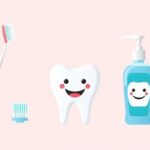If you’re searching for a natural solution to enhance your dental health, how to use oil pulling for healthy teeth might be the answer you’ve been craving. Many women over 30 face challenges like dental issues and are constantly seeking effective remedies that seamlessly fit into their busy lives. Embracing this ancient practice can help soothe the silent frustrations you may feel while offering a refreshing boost to your oral care routine. In this post, we’ll guide you through the magical journey of oil pulling and how it can transform your smile.
What is Oil Pulling and Why Is It Beneficial?
Oil pulling is an ancient Ayurvedic practice that involves swishing oil in your mouth for oral health. It is believed to help remove toxins and improve dental hygiene. Many women over 30 are seeking natural remedies to maintain their health and beauty. With concerns about traditional methods and their impact on our bodies, oil pulling can be a refreshing choice.
Studies suggest that oil pulling can help reduce harmful bacteria in the mouth, improve gum health, and even combat bad breath. The process is simple and can fit seamlessly into your morning routine, making it an appealing option for those who prioritize holistic health.
The Right Oils for Effective Oil Pulling
Choosing the right oil is crucial for successful oil pulling. Here are some popular options:
- Coconut Oil: Rich in lauric acid, this oil is renowned for its antibacterial properties. It has a pleasant flavor and is easy to use.
- Sesame Oil: A traditional choice, sesame oil is full of antioxidants and has been used for centuries in oil pulling.
- Sunflower Oil: Like sesame oil, sunflower oil is gentle on the mouth and has anti-inflammatory benefits.
Using high-quality, organic oils can enhance the effects of oil pulling. Consider experimenting with different oils to see which works best for you!
How to Start Your Oil Pulling Journey
Starting your oil pulling practice is easy and can be done in a few simple steps:
- Choose Your Oil: Select an oil that appeals to you in terms of taste and texture.
- Measure Out: Take about one tablespoon of the oil.
- Swish and Pull: Swish the oil around your mouth for 15-20 minutes. Be sure to move it between your teeth, but don’t swallow it!
- Spit It Out: After swishing, spit the oil into a trash can. Avoid the sink to prevent clogs.
- Rinse Your Mouth: Rinse your mouth with warm water and brush your teeth as usual.
It’s beneficial to do this first thing in the morning, before eating or drinking anything. This way, you can maximize the benefits right at the start of your day!
Tips for Incorporating Oil Pulling into Your Routine
Integrating oil pulling into your daily routine can be straightforward and enjoyable:
- Create a Schedule: Choose specific days to oil pull, or make it a daily habit.
- Pair with Your Morning Ritual: Combine oil pulling with other morning activities, like showering or reading.
- Stay Mindful: Use swishing time as a moment to meditate or practice mindfulness, focusing on your breath.
Staying consistent is key! The more you stick with it, the more natural it will become in your routine.
Common Misconceptions About Oil Pulling
Despite its growing popularity, there are myths surrounding oil pulling:
- It Replaces Brushing: Oil pulling is a supplement to oral hygiene, not a replacement for brushing and flossing.
- Instant Results: Oil pulling may take time to show noticeable results, so patience is essential.
- Not for Everyone: While it’s safe for most people, those with certain health conditions should consult with their dentist first.
Understanding these misconceptions allows for a more informed and balanced approach to dental health.
Expected Results: How Oil Pulling Transforms Teeth
Many women have reported a range of positive effects from oil pulling:
- Whiter Teeth: Regular oil pulling might help reduce stains and whiten teeth over time.
- Improved Gum Health: Users often note less inflammation and bleeding in gums.
- Fresher Breath: Eliminating bacteria can lead to fresher breath and increased confidence.
These benefits not only enhance your smile but can also contribute to a positive self-image, making you feel more empowered and radiant.
Oil Pulling vs. Traditional Oral Care Methods
Oil pulling is often compared to traditional methods of oral care:
- Complementary Approach: It complements brushing and flossing rather than replacing them, offering a holistic approach to dental care.
- Natural Remedy: Unlike some toothpaste, oil pulling uses all-natural ingredients without harsh chemicals.
- Accessible and Affordable: Oils are typically inexpensive and accessible, making it easier to maintain an oral hygiene routine.
Consider adding oil pulling as a natural alternative to conventional products, letting nature’s ingredients work for you!
How Often Should You Practice Oil Pulling?
For best results, practicing oil pulling regularly is essential:
- Frequency: Most recommendations suggest oil pulling 3-5 times a week.
- Duration: Aim for 15-20 minutes each session to maximize benefits.
Listen to your body and adjust your routine as needed. You might find that daily practice works wonders for you!
Personal Stories: Women Who Changed Their Smiles
Many women have embraced oil pulling and shared their transformations:
- Maria, 35: “I started oil pulling during the pandemic. My gum health improved, and I feel much more confident.”
- Jessica, 42: “After a month of oil pulling, my teeth feel cleaner than ever. I can’t believe the difference it made!”
- Linda, 50: “I was skeptical, but after trying it, I noticed my breath is always fresh. I love the natural approach!”
These stories reflect the positive changes oil pulling can bring, igniting hope for a brighter smile.
Creating a Holistic Approach to Dental Health
Oil pulling is just one aspect of maintaining oral health. Consider complementing it with:
- Balanced Diet: Eating whole foods can provide essential nutrients for your teeth and gums.
- Regular Check-ups: Keep up with dental visits for professional cleanings and assessments.
- Hydration: Drinking enough water is vital for your overall health and oral wellbeing.
By making these small changes, women can create a comprehensive approach to dental health that promotes not only healthy teeth but also overall vitality.






